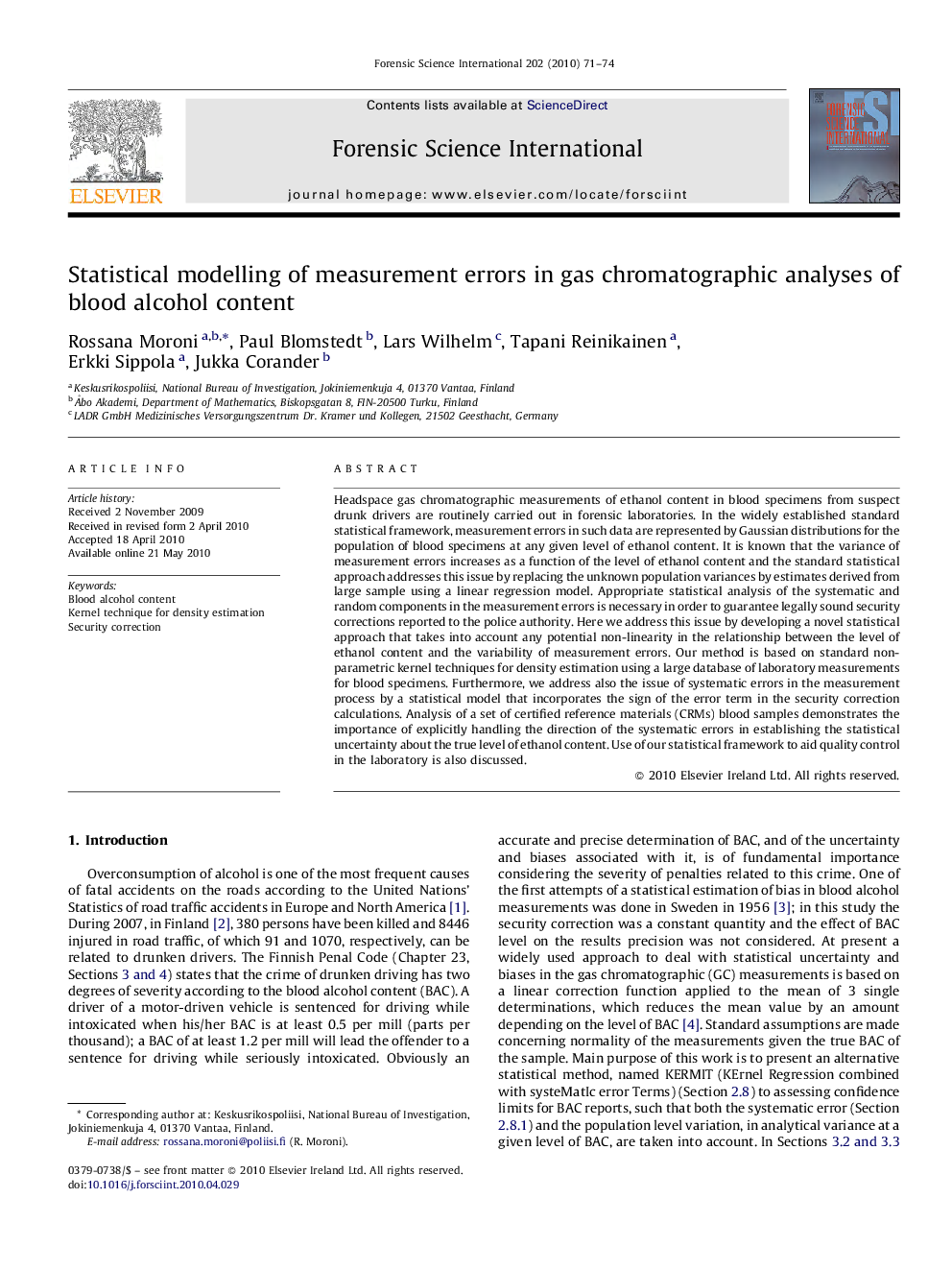| Article ID | Journal | Published Year | Pages | File Type |
|---|---|---|---|---|
| 96822 | Forensic Science International | 2010 | 4 Pages |
Headspace gas chromatographic measurements of ethanol content in blood specimens from suspect drunk drivers are routinely carried out in forensic laboratories. In the widely established standard statistical framework, measurement errors in such data are represented by Gaussian distributions for the population of blood specimens at any given level of ethanol content. It is known that the variance of measurement errors increases as a function of the level of ethanol content and the standard statistical approach addresses this issue by replacing the unknown population variances by estimates derived from large sample using a linear regression model. Appropriate statistical analysis of the systematic and random components in the measurement errors is necessary in order to guarantee legally sound security corrections reported to the police authority. Here we address this issue by developing a novel statistical approach that takes into account any potential non-linearity in the relationship between the level of ethanol content and the variability of measurement errors. Our method is based on standard non-parametric kernel techniques for density estimation using a large database of laboratory measurements for blood specimens. Furthermore, we address also the issue of systematic errors in the measurement process by a statistical model that incorporates the sign of the error term in the security correction calculations. Analysis of a set of certified reference materials (CRMs) blood samples demonstrates the importance of explicitly handling the direction of the systematic errors in establishing the statistical uncertainty about the true level of ethanol content. Use of our statistical framework to aid quality control in the laboratory is also discussed.
